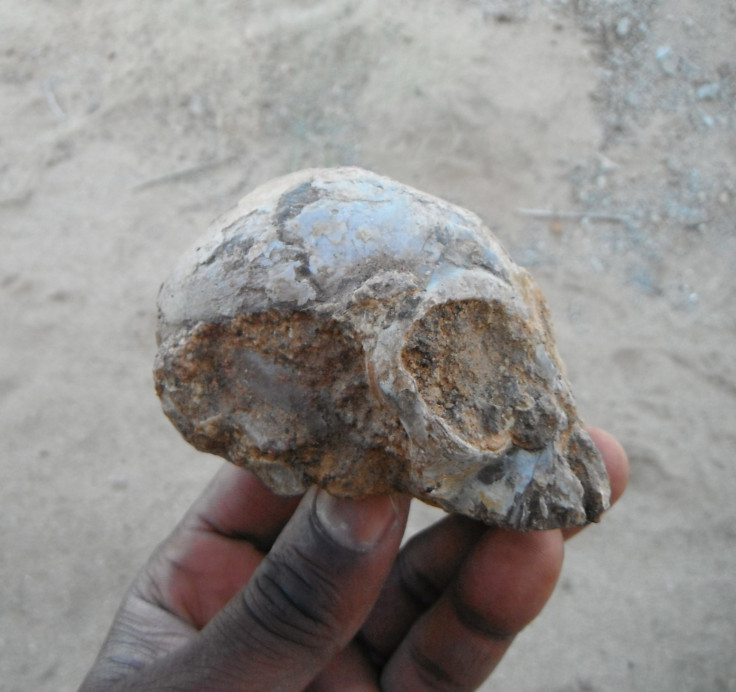This baby ape skull is 13 million years old and a vital clue in the mystery of human evolution
Alesi was alive during the Miocene epoch, when apes were a very successful group.
A 13-million-year old infant ape cranium has been discovered in Kenya. It belongs to a previously unknown species.
This discovery might shed light on the common ancestry of living apes and humans, revealing new clues about our evolutionary history over the last millions of years.
The unique fossil, now described in the journal Nature, was discovered in 2014 on the western shores of Lake Turkana in northern Kenya, on the last day of excavations. It was found in sediment layers older than the best known layers in the area that gave us the famous Turkana boy skeleton in 1984.
Scientists have estimated this fossil dates back to the Miocene epoch, and is about 13 million years old.
Poor fossil record
Among living primates, humans are most closely related to the apes, including chimpanzees, gorillas, orangutans and gibbons. It is thought that our last common ancestor with chimpanzee lived in Africa 6 to 7 million years ago. A lot of later fossils have been found, helping scientists piece together the puzzle of human evolution since then.
However, the fossil record that would be relevant to understand the evolution of the common ancestors of living apes and humans before 10 million years ago is scarce. Most of the time, only isolated teeth and partial jaw bones have been recovered so any in-depth investigations have been challenging.
The fossil of the new species, named Nyanzapithecus alesi, is not only the most complete extinct ape skull yet found, it also comes from this poorly understood time period, which had a poor fossil record to date.

It's not clear why this fossil is so complete. The area where Alesi was discovered was long ago blanketed by thick layers of ash from massive volcanic eruptions, so it may have died during such a catastrophic event. It's possible that the ash is what might have allowed the fossil to stay so well preserved over the millennia, although we cannot be certain.
Scientists are nevertheless sure that this was the skull of an infant. Sophisticated X-ray imaging has indeed allowed them to study growth lines in the unerupted adult teeth and to estimate that it was about 1 year and four months old when it died. The fact that this is a skull of an infant represents an opportunity to learn more about the evolutionary history of apes and humans.
"In the past, people would almost regret it when they came across a juvenile fossil. The only parts of the skull you can study as if it was an adult skull are the unerupted adult teeth and the inner ear, which are already at their adult size in babies. Scientists can try to predict what the species would have grown up to look like as an adult, based on growth seen in living species, but we have to be cautious with these interpretations," study author Fred Spoor from UCL told IBTimes UK.
"That being said, it's great to have a juvenile fossil because they can help us understand evolution better. In children you can study the growth process, for example how the brain matures, and this is important to understand evolutionary processes."

Documenting a new species
Alesi appears to be similar to some species of gibbon in aspects of overall cranial morphology and dental development, but scientists find that it represents an entirely new species that had not be documented before.
"There are so few complete and well preserved fossils that we don't really have a good framework to compare it to. Studying the teeth helped us with our diagnosis. It appears that it is an ape and the shape of its molar teeth is characteristic of the genus Nyanzapithecus it belongs to," Spoor said.
"However, its teeth are much larger, suggesting that it was a different, larger species than the others known in this group. We now hope to find more fossils of this species, limb bones in particular to work out how it would have moved."
In coming years, the team will perform more analyses to learn more about Alesi's brain evolution and to see if it can shed any light on our own ancestry. This may help them get a better idea of what the last common ancestors of living apes would have looked like.
From looking at the fossil's inner ear, they can already tell that it would have had a slower, less agile mode of locomotion than the acrobatic swinging movements of present-day gibbon species.
"We are not claiming that this species was the actual last common ancestor of all living apes, including humans, but it does give us a glimpse of where we come from. Apes were a very successful group during the Miocene epoch, with many species about, and understanding that we have our roots somewhere in that, that helps us go back to our foundations," Spoor concluded.
© Copyright IBTimes 2025. All rights reserved.






















